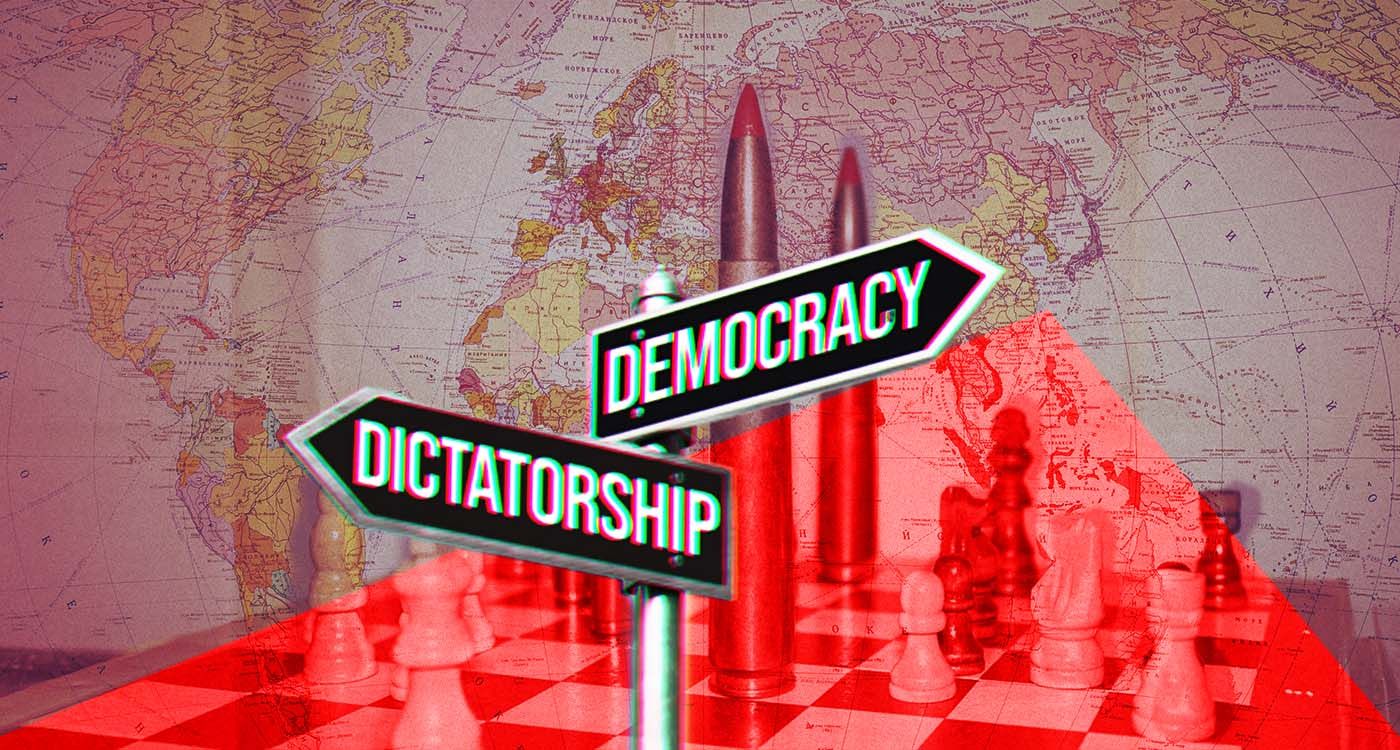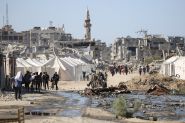- Home
- Middle East
- Diplomacy and Totalitarianism

©This is Beirut
Observing international life today conveys puzzling images and ambivalent feelings about its complexion. We have a difficult time categorizing events, making sense of political evolutions, and dealing with them. The collapse of the conventional political taxonomy with its binaries and ideological lenses invites us to rethink our intellectual categories and policymaking. The diplomatic efforts deployed across a conflict spectrum stretching from Eurasia to the wider Middle East are worth pondering if we are to find our way in the labyrinthine politics of the post-Cold War era and its enduring intellectual obfuscations thirty-six years after the fall of communism.
The conflicts in Ukraine, Georgia and Armenia attest to the ongoing travails of a post-Cold War era and to the inability to stabilize its floundering geopolitics. Vladimir Putin’s political revanchism is symptomatic, revealing the unending dilemmas of the “Russian idea” and its imperial derivatives. Russia has never been able to address its lingering identity problems and settle for its European tropism. The Eurasian ideology reflects the unmanageable conflicts between clashing civilizational realms and their geopolitical modulations.
The historical wagers of Peter the Great (1682–1725) and Catherine the Great (1762–1796) and their resolute embrace of the European anchors were defeated when Communism and its Soviet geopolitics generated an ideological panopticon at the crossroads of totalitarian ideology and militant imperialism. The current ravings of the autocratic mafia reenact the illusions and the tragedies of a decaying imperialism. Ukraine, Armenia and Georgia are defraying the costs of a waning murderous dystopia. Putin’s inability to face the strategic threats posed by China and the Islamic republics of Central Asia drives him toward targeting Europe, portrayed as the ultimate menace to Russia’s strategic security.
These three targeted countries are emblematic of an overriding concern, the destruction of the European Union as the corollary to the resuscitation of the Russian imperial hubris. The short-sighted script adopted by the Trump administration fails to reckon with the meta-narrative that lies beneath the war in Ukraine and its replicas. The Alaska meeting once again confirmed that Putin is unwilling to renounce his imperial ambitions, and the US-European summit and its preliminaries were able to preempt the presumed US-Russian deal, strengthen the NATO defenses, solidify Ukraine’s Western geopolitical and cultural anchors, and reset the geostrategic balance.
The ultimate chance for peace is to steady the Ukrainian defenses, double down on the economic sanctions, and pursue negotiations with Russia. The diplomatic complacency attempted by President Trump does not seem to yield the expected outcomes. The very fact that the battles raged during negotiations testifies to Putin’s unyielding posture, and his outright cynicism. The delusions of personal diplomacy have dissipated, however useful they might have been in jump-starting the deadlocked military situation.
Once again, diplomacy doesn’t seem to work with dictators who are in the business of buying time and pursuing their objectives. The Russian dictator, by coming to the meeting, had a multilayered agenda: break away from his isolation, finalize an accommodating deal with the US president, and sideline Europe. The well-coordinated diplomatic move between the US administration and the EU was able to dampen Putin’s inflated expectations, preempt his “divide and conquer” strategy, and renew NATO’s momentum. The hypothetical sequencing between truce and negotiations was initially rejected and prevented the Russian side from setting the agenda of future negotiations.
The same scheme applies to the situation in Iran. The Iranian regime is trying to outmaneuver its nemeses and to downplay its military defeat while diplomacy is under curfew. The case of frozen conflicts is never instrumental in diplomacy; on the contrary, it has always been counterproductive and detrimental to negotiated conflict resolution. The Iranian regime has used this idle time to upgrade its internal repression, uphold its proxies in Lebanon, Iraq and Yemen, undermine the political mediations in Gaza, and overlook the strategic incidences of its military defeat and the destruction of its nuclear platforms.
The lingering state of political void that prevailed after the bombardment of the nuclear sites is inexplicable and unsustainable, and the military operations are not self-contained or purposeless actions. Either the Iranian regime has to engage the diplomatic process on the very basis of its military defeat and negotiate its way into nuclear demilitarization, normalization at the international level and political liberalization within the domestic realm, or there is an urge to finish the military campaign and defeat the Islamic regime that is openly engaged in political subversion. The situations in Lebanon, Syria, Gaza, Iraq and Yemen are explicit cases whereby there are no chances for diplomacy, dialogue-based conflict resolution and peace unless the Iranian power politics are checkmated and the conditions for peace, geopolitical stabilization and democratization are made possible.
The Israeli disruption of the “integrated operational platforms” devised by the Iranian regime allowed Lebanon to challenge Hezbollah’s reign of terror and foil its domination strategy; undermined the Syrian regime and opened up the public space for tentative political change; enhanced the chances of political reconciliation and reform in Iraq; destroyed Hamas and reset the dynamics of a negotiated political solution with the Palestinians; and eradicated the Houthis’ faraway terrorism, affecting the end of Yemen’s civil war. The Iranian regime is hell-bent on reversing the fatal dynamics, to no avail, and dismantling the Iranian arc of terror is essential if the Middle East is to make its way to peace.
Read more




Comments